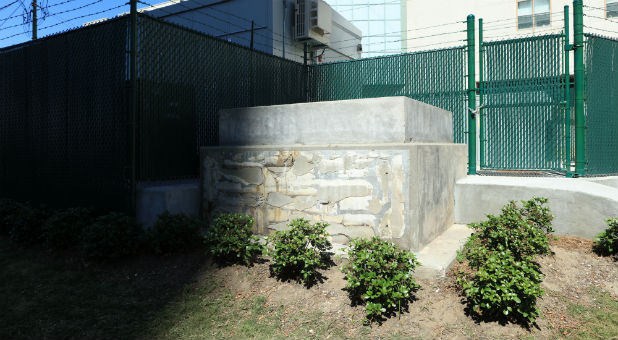New Orleans Removes One of Four ‘Racially Offensive’ Statues
New Orleans on Monday removed a statue that the mayor said glorified a 19th-century attack on police by white supremacists, the first of four monuments the city will relocate to send a message of “diversity, inclusion and tolerance.”
Authorities took down the statue honoring the so-called Battle of Liberty Place, acting without notice and under the cover of darkness for security reasons, and will move it to a museum or other facility, Mayor Mitch Landrieu said. A federal court cleared the way for its removal in March.
Erected in 1891, the monument commemorates an 1874 attack on the racially integrated city police and state militia by the white supremacist “Crescent City White League,” the mayor’s office said.
“The statue was put up to honor the killing of police officers by white supremacists,” Landrieu told reporters in front of the city’s memorial to fallen law enforcement officers.
“Of the four that we will move, this statue is perhaps the most blatant affront to the values that make America and New Orleans strong today,” he added.
The removals are part of a southern-state trend to consign slavery-era monuments to museums, which intensified after the June 17, 2015 shooting deaths of nine black parishioners in a Charleston, South Carolina, church by a white man.
Statues of Jefferson Davis, the president of the Confederate States of America during the American Civil War, and of Robert E. Lee and P.G.T. Beauregard, two of its best-known generals, are also slated for removal from public places in New Orleans.
Landrieu declined to disclose a timetable for the removal of the other three monuments because of an “intense level of threats and intimidations” to the hired contractors who are being paid with private money.
“But let me be clear, we will not be deterred,” he said.
The statues have little relevance to New Orleans, having been put up decades after the end of the Civil War in 1865 as part of the “Cult of the Lost Cause,” the city said in a statement announcing the removal of the first statue.
“We can remember these divisive chapters in our history in a museum or other facility where they can be put in context—and that’s where these statues belong,” Landrieu said in his prepared remarks. {eoa}
© 2017 Thomson Reuters. All rights reserved.














































